| |
SUBCLINICAL ATHEROSCLEROSIS AND IMMUNE
ACTIVATION AMONG US FEMALES VS MALES WITH HIV
- women have more immune activation
|
| |
| |
Markella V. Zanni1*, Borek Foldyna 1*, Kenneth C. Williams2 , Tricia H. Burdo3, Sara McCallum1, Sara E. Looby1, Patrick Autissier2, Kathleen V. Fitch1, Judith S. Currier4,
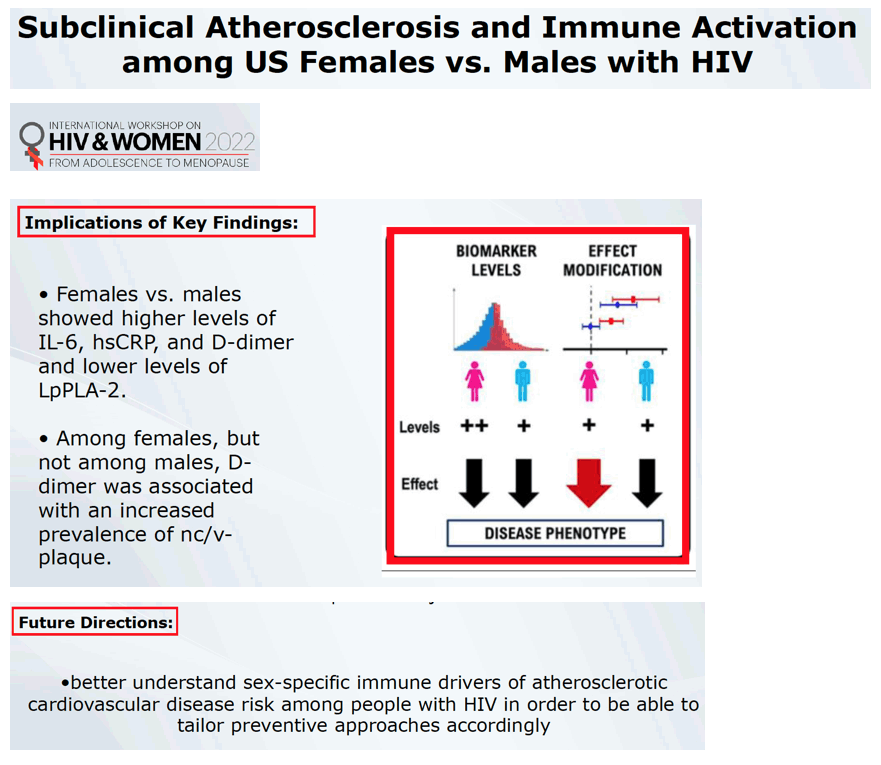
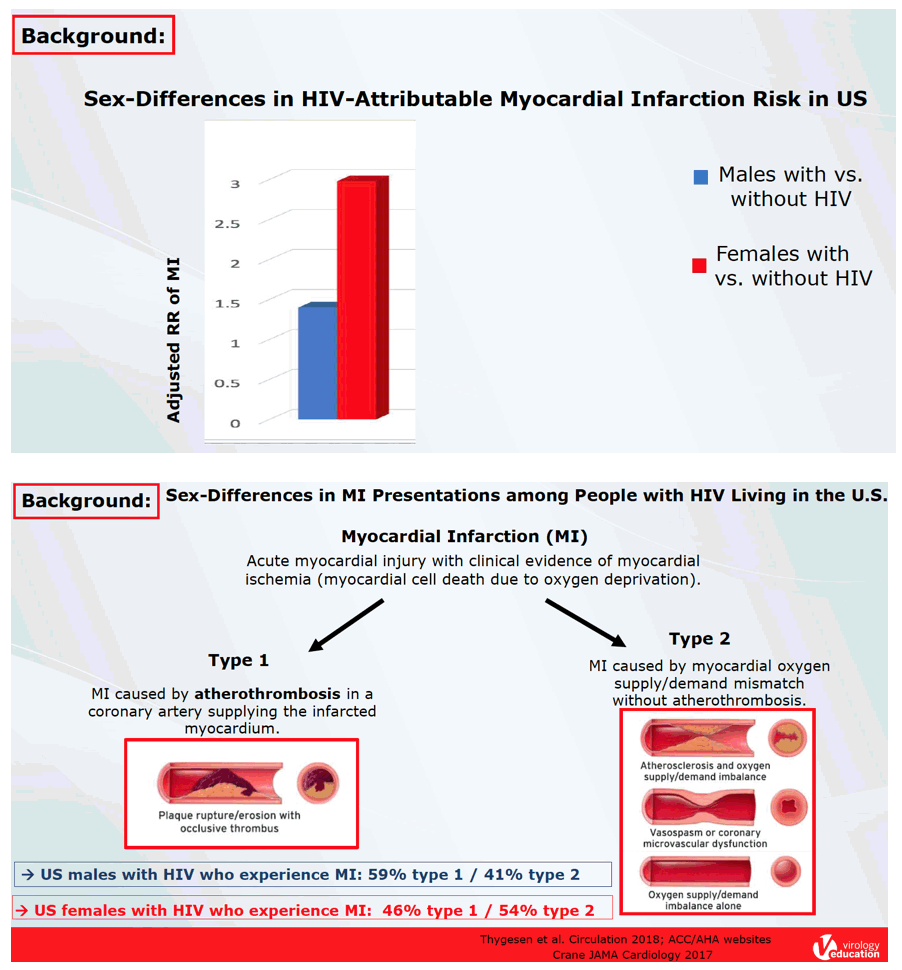
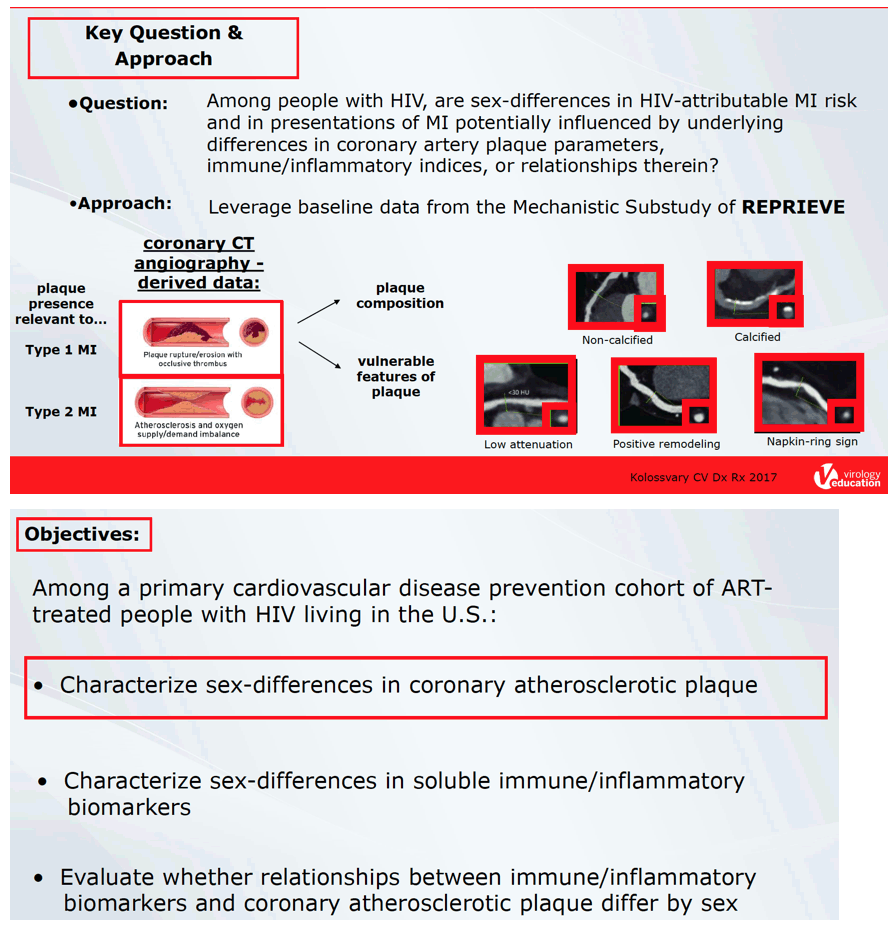
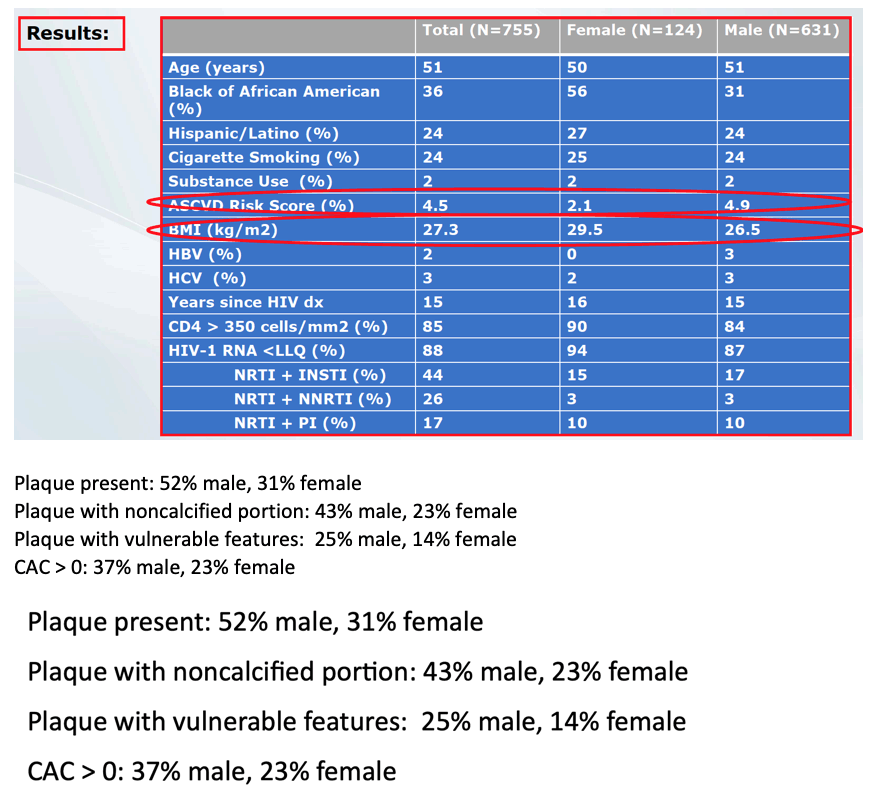

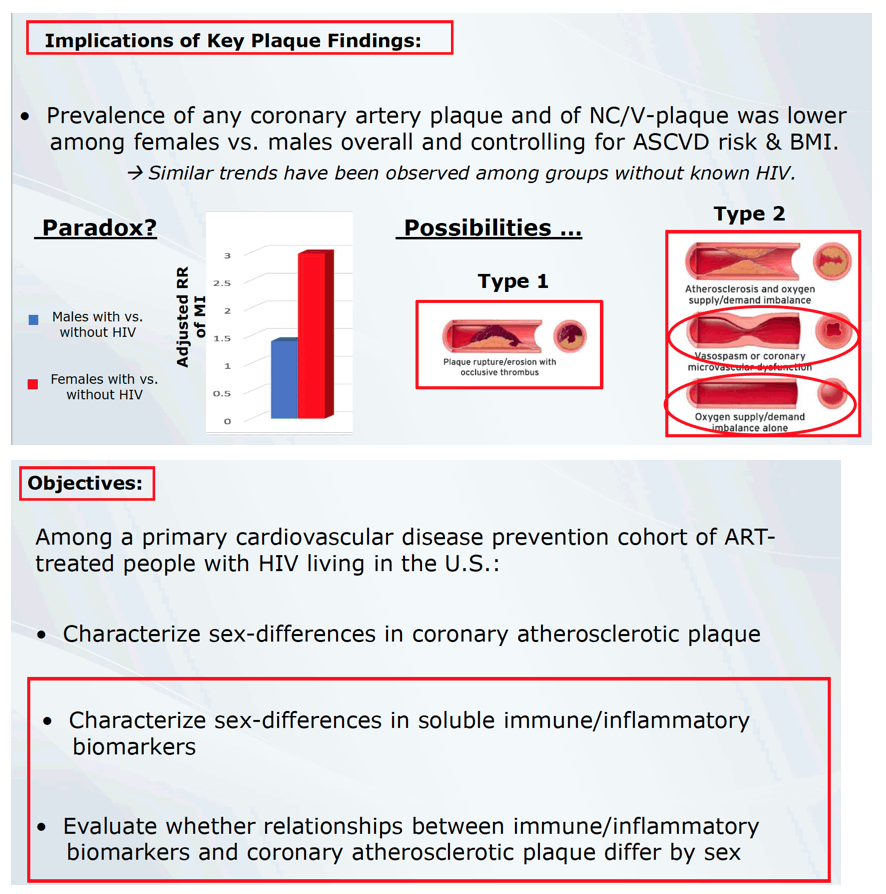
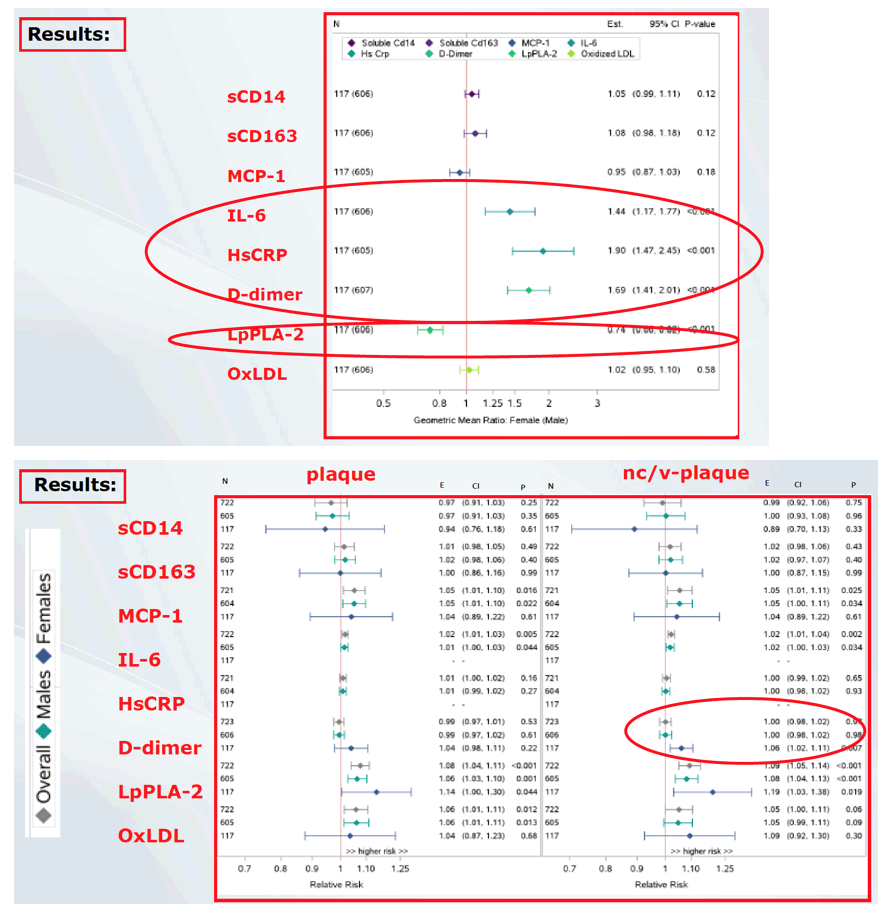

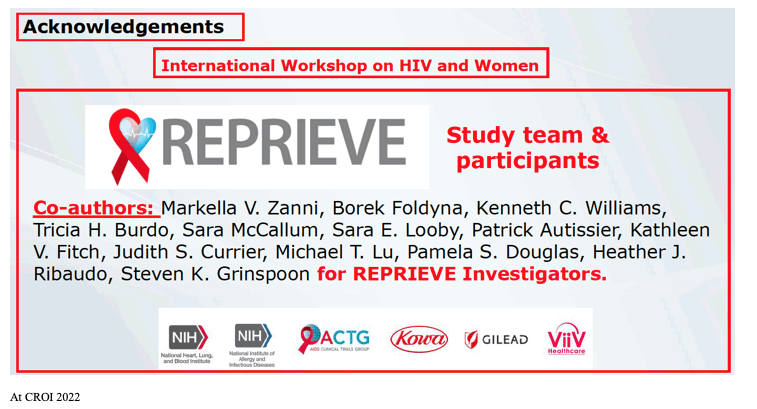

Markella V. Zanni1*, Borek Foldyna 1*, Kenneth C. Williams2 , Tricia H. Burdo3, Sara McCallum1, Sara E. Looby1, Patrick Autissier2, Kathleen V. Fitch1, Judith S. Currier4,
Michael T. Lu1, Pamela S. Douglas5, Heather J. Ribaudo6, Steven K. Grinspoon1 for REPRIEVE Investigators
1Massachusetts General Hospital, Boston, MA, USA, 2Boston College, Chestnut Hill, MA, USA, 3Temple University, Philadelphia, PA, USA, 4University of California Los Angeles, Los Angeles, CA, USA, 5Duke Clinical Research Institute, Durham, NC, USA, 6Harvard TH Chan School of Public Health, Boston, MA, USA, *Co-authors contributed equally
Among people with HIV (PWH), sex-differences in presentations of atherosclerotic cardiovascular disease (ASCVD) may be influenced by underlying differences in coronary plaque parameters, immune indices, or relationships therein.
REPRIEVE, a primary ASCVD prevention trial, enrolled ART-treated PWH globally. At study entry, a subset of US REPRIEVE participants underwent coronary CT angiography (CCTA) ± immune phenotyping (N=755 CCTA; N= 725 CCTA + immune). We characterized sex-differences in coronary plaque (log binomial regression for a relative prevalence rate (RR)) and immune indices (linear regression) and compared immune-plaque relationships by sex. Unless noted otherwise, analyses adjust for ASCVD risk score.
The primary analysis cohort included 631 males and 124 females (median age 51 years). ASCVD risk was higher among males (median 4.9% vs. 2.1%) while obesity rates were higher among females (48% vs. 21%). Prevalence of any plaque and of plaque with either visible noncalcified portions and/or vulnerable features (NC/V-P) was lower among females vs. males overall and controlling for ASCVD risk (Fig1A): RR (95% CI) for any plaque 0.67 (0.50, 0.92), RR for NC/V-P 0.71 (0.51,1.00) (adjusted for ASCVD risk and BMI). Among those with any plaque, prevalence of NC/V-P did not differ by sex (P=0.33). Females vs. males showed: 1) higher levels of IL-6, hsCRP, and d-dimer and lower levels of Lp-PLA2 (P<0.001 for all); 2) a lower percentage of total monocytes and a shift toward a higher percentage of inflammatory/intermediate (CD14+CD16+) and patrolling/non-classical (CD14-CD16+) vs. classical (CD14+CD16-) monocyte subsets (P<0.001 for all). Higher levels of Lp-PLA2, MCP-1, and oxLDL were associated with higher plaque (P<0.02) and NC/V-P prevalence (Fig1B), with no differences by sex (interaction P>0.25). Among females but not males, d-dimer was associated with higher prevalence of NC/V-P (Fig1B).
Females vs. males with HIV had a lower prevalence of plaque and plaque with visible noncalcified portion and/or vulnerable features, as well as key differences in immune parameters. Immune-plaque relationships differed by sex for d-dimer, but not other tested parameters. Understanding sex-specific immune drivers of subclinical coronary pathology will be key to tailoring ASCVD preventive therapies to PWH.
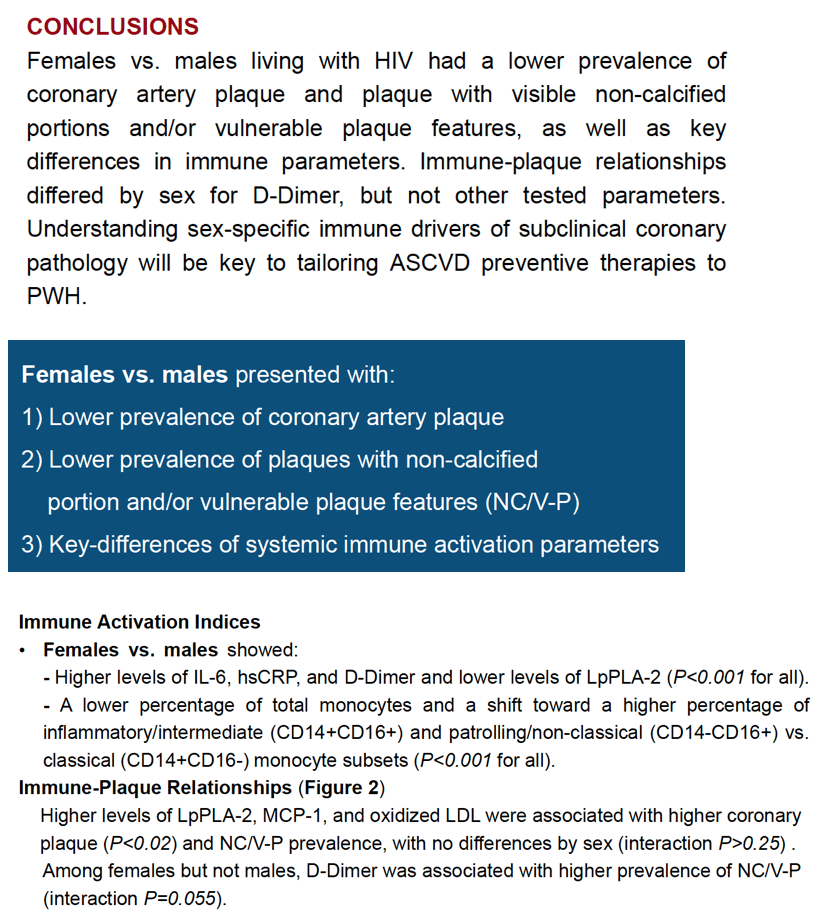
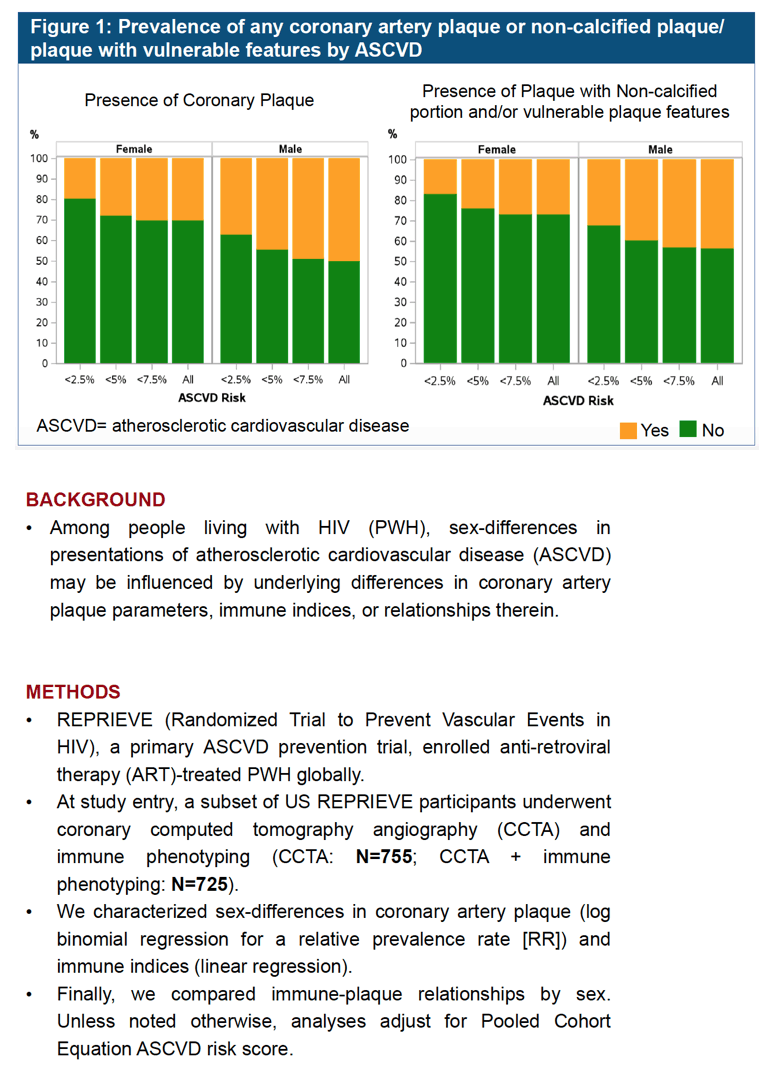

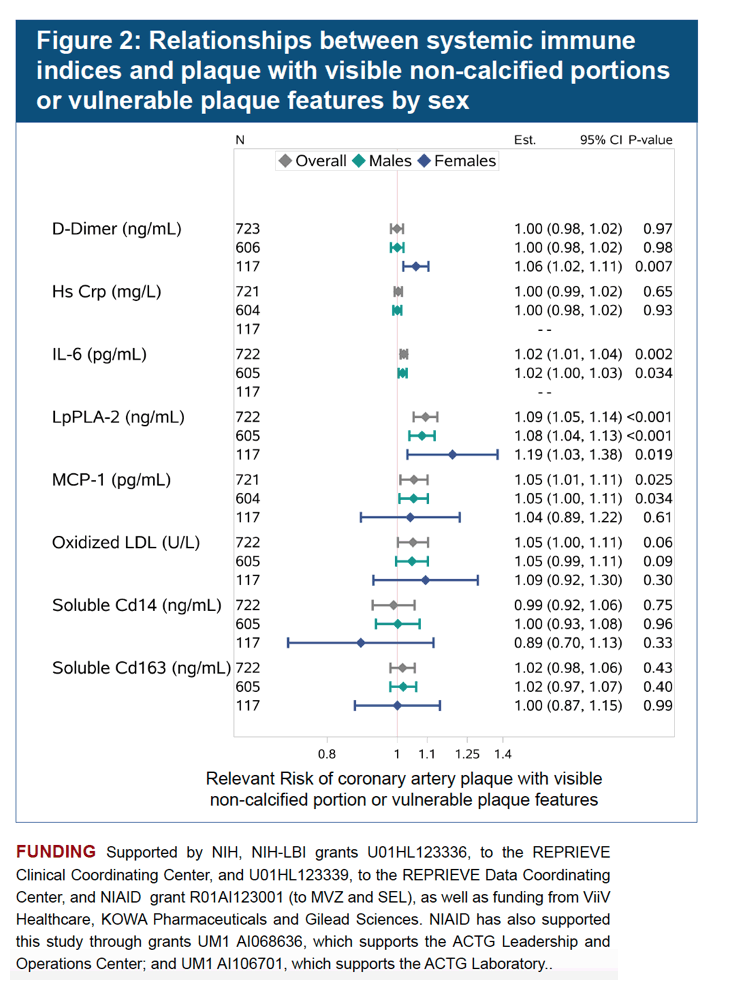
|
|
| |
| |
|
|
|